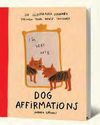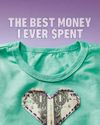13 Things - Surprising Facts About At-home DNA Tests
Reader's Digest US
|May 2019
If you send your DNA to two different companies to find out your ancestry, you may end up with two different results.

1 If you send your DNA to two different companies to find out your ancestry, you may end up with two different results. That’s because there’s no certification required for DNA-testing companies, and their methods aren’t independently validated, says Tufts University professor Sheldon Krimsky, PhD, board chair of the Council for Responsible Genetics. “They may get the basic idea correct—that you are a little less than half northern European, for example,” he says. “But when they say you’re 30 percent from here and 60 percent from there, it’s a statistical guess based on their own proprietary database and the statistical method they use.”
2 Your results will be less precise if you’re not European. The more people from your ancestral region in a company’s database, the more accurate your results will be, says Hank Greely, director of the Center for Law and the Biosciences at Stanford Law School. Many Americans have northern and western European ancestry, and some evidence indicates they’re more likely to use DNA testing. “Even results from southern and eastern Europe aren’t as accurate,” Greely says.
3 If you’re Native American or African American, no DNA test can tell you what tribe your ancestors belonged to. Testing companies that claim they can are misleading you, says Greely.
Bu hikaye Reader's Digest US dergisinin May 2019 baskısından alınmıştır.
Binlerce özenle seçilmiş premium hikayeye ve 9.000'den fazla dergi ve gazeteye erişmek için Magzter GOLD'a abone olun.
Zaten abone misiniz? Oturum aç
Reader's Digest US'den DAHA FAZLA HİKAYE

Reader's Digest US
Joyride
A poacher of rare orchid plants in Florida. An African king who drives a cab in New York City. How people spend a Saturday night in America.
1 min
December 2025 / January 2026

Reader's Digest US
Dog Affirmations
Illustrator Andrea Cáceres uplifts and delights with these picture-book insights into the deepest thoughts of man's best friend.
1 min
December 2025 / January 2026

Reader's Digest US
ROCK BOTTOM
A HIKER SOMEHOW SURVIVED BEING PINNED IN A CREEK UNDER A 700-POUND BOULDER. THEN THE WATER STARTED TO RISE.
11 mins
December 2025 / January 2026

Reader's Digest US
Secret Santa Saves the Day
A stranger keeps the Christmas spirit alive for a little girl
4 mins
December 2025 / January 2026

Reader's Digest US
THE BEST MONEY I EVER SPENT
Deep Pockets - One Christmas, my wife, who seldom wears jewelry, wanted diamond earrings as her gift. I obliged but figured the little box would ruin the surprise, so I bought an inexpensive fleece jacket at a farm supply store and put the earring box in the pocket.
5 mins
December 2025 / January 2026

Reader's Digest US
Rental Family
Starring Brendan Fraser
1 min
December 2025 / January 2026

Reader's Digest US
St. Denis Medical
Starring Allison Tolman
1 min
December 2025 / January 2026
Reader's Digest US
No Drama Llamas
BEING WITH LOVED ones during the holidays is a delight. Getting there is not.
1 min
December 2025 / January 2026

Reader's Digest US
The Christmas Truce of 1914
As World War I raged around them, soldiers facing off along one stretch of the fighting decided to hit pause
6 mins
December 2025 / January 2026

Reader's Digest US
Our Hanukkah Miracle
Christmas takes on new meaning for a Jewish couple
3 mins
December 2025 / January 2026
Translate
Change font size

